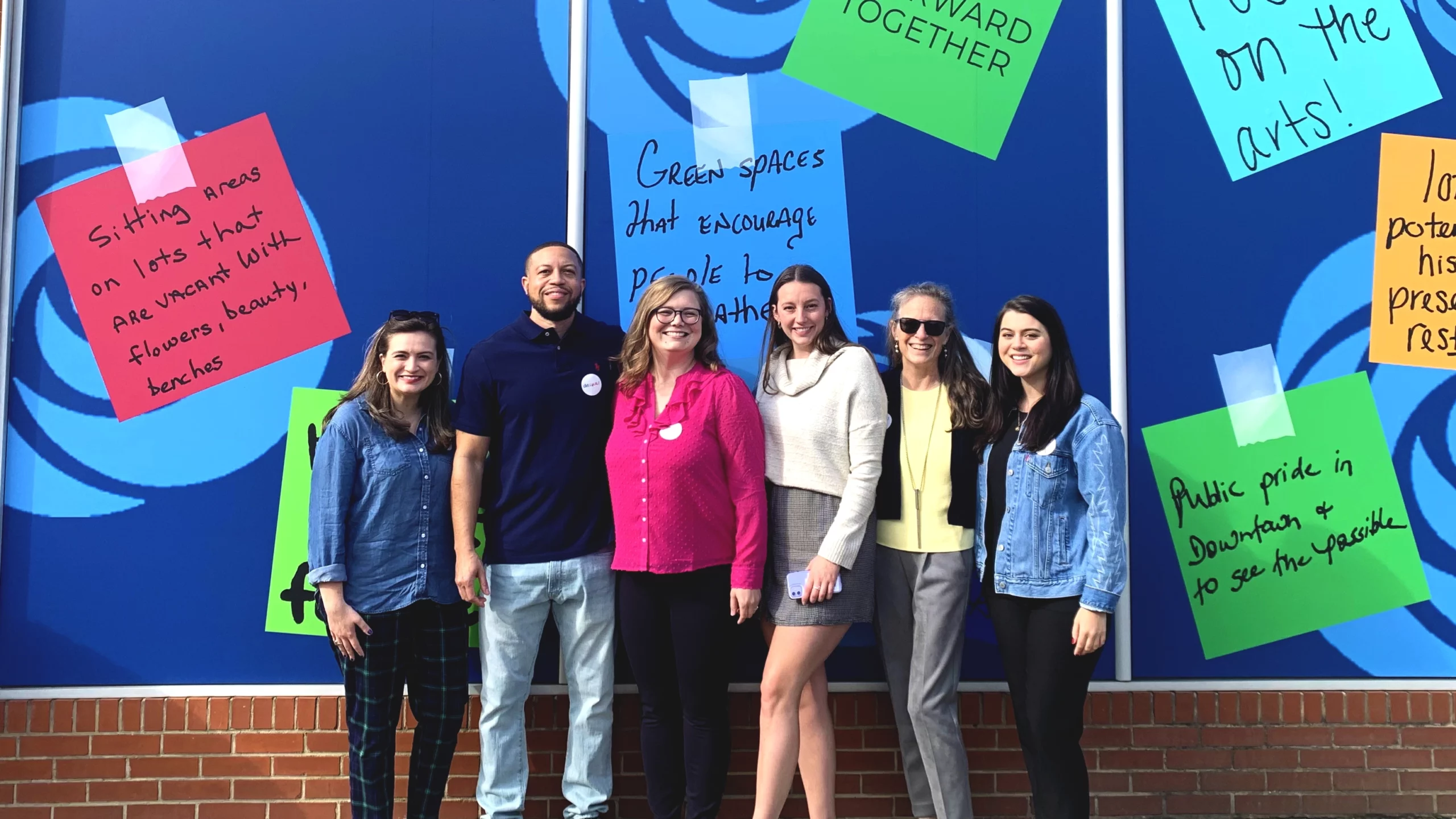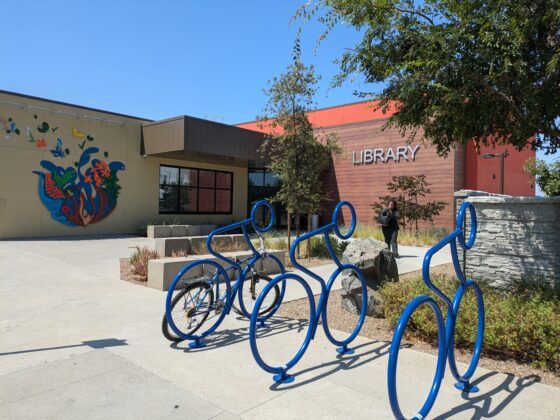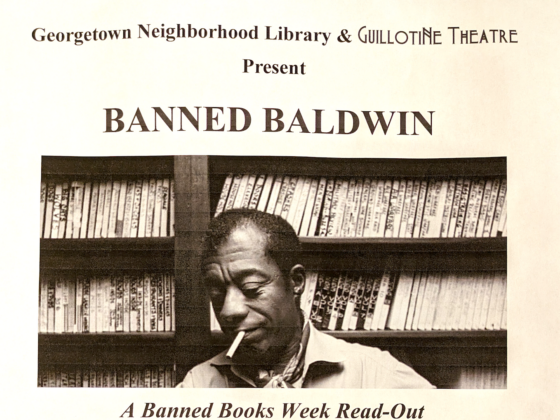Sitting at a picnic bench on the screened patio of Ribs, Wings, & More in Lancaster, South Carolina, Susan and T. Alston DeVenny, Cynthia Curtis, Michelle Ellia, and I pause our conversation now and again to let the occasional thundering of a hotrod engine or vintage truck punctuate our exchanges and then fade into the late August evening air as the excitement around a nearby car show dissipates. Michelle, my fiancée and Our Towns colleague, and I both appreciate a good, downtown car show, but we’re there to hear more about a different kind of excitement that’s been building in the region over the past six or so years.
As a roar ripping through the streets wanes to a rumble and then to quiet, Susan picks up the conversation. The President and CEO of the Arras Foundation tells us that in early 2016 she and foundation board members had been asking themselves: “How do you do an intentional community engagement process that makes certain that you’re hearing from everybody?”
They wanted area residents to know that the foundation was listening, that voices in the communities were being heard. That led the team at the health legacy foundation, located in Lancaster, with the mission to improve the wellness of area residents in Lancaster and Chester counties, to begin researching “tried-and-tested” models to spur community development throughout the region, she tells us.
Up to that point, the foundation had been a successful traditional grant maker for 20 some years, Susan tells us. Holding scheduled grant cycles, reviewing and approving applications, and cutting checks. But the trustees, she says, wanted to explore how to scale its impact in the region. Her role as president and CEO would be “to think with the board, about what is the vision, and how to go deeper with broader impact,” she tells us.
Susan and her husband, who is the mayor of Lancaster, had moved to the area in 1988. Prior to joining the Arras Foundation in 2015, she was the state director of South Carolina First Steps for 15 years, she tells us. She enjoyed the work, but it often took her away from home – traveling throughout the state’s 46 counties on early childhood community initiatives. She was then raising four children, who are adults now.
When she was offered the chance to bring her institutional knowledge back to her hometown, and to be closer to friends and family, she took the opportunity and joined the foundation in Lancaster.
“My work before the foundation told me – and I think I just come at this as with a human spirit – when you bring people together, the best ideas come out of that.”
The first step in the breakthrough was to listen to the communities they serve in the region – “not through the proxy of a nonprofit but actual people you can bring to the table,” she tells us.
A few months into her new position, looking for ways to approach the foundation’s work with inclusion in mind, Susan attended a Council on Foundations conference in April 2016. There, she first learned about Community Heart & Soul, a resident-driven community development model based in Vermont with a national footprint. (Community Heart & Soul is a partner and supporter of Our Towns reporting.)
She attended a presentation that highlighted quick lessons from different rural communities already engaged in the Heart & Soul process of how they achieved success, she tells us. She was intrigued, and wondered if residents in the area would be, too. So, she scheduled a community meeting to introduce the model.
She thought maybe 50 some people might show up, she tells us. Over 150 residents attended.
That led to continued conversations with residents, and with Community Heart & Soul. Agreeing that this was the wheel that seemed to fit the make and model of the South Carolina region, the towns of Fort Lawn and Kershaw became the first two South Carolina communities to adopt the Heart & Soul process. The foundation provided funding and resources to support the towns, and deployed some of their staff to serve as Community Heart & Soul coaches, including Cynthia, one of the Arras Foundation’s Community Investment Officers.

At the same time the foundation was looking to be driven by the residents’ voices, Susan and her team were also looking to collect, and be informed by, data to inspect overall community health. That led to the development of 11 community indicators that they use to “watch for the long-view,” Susan tells us, to see, “how we are making an impact.”
They include:
- Arts and Civic Engagement;
- Early Childhood Education;
- K12 Schools and Education;
- Transition to Adulthood;
- Healthy Economy;
- Transportation Access;
- Healthy Living;
- Green Space, Clean Air and Water;
- Access to Healthcare;
- Strengthening and Supporting Families;
- Faith Community.
The foundation identified 60 measures to track the impact across those areas.
Of what we have reported on, and of the stories we have yet to tell, we saw Arras’s imprint present across many points in the towns and region – including:
- Environmental efforts, like the Catawba Riverkeeper (a developing park and trail we toured in Fort Lawn) and KCPC (the Kershaw Community Park Council);
- Assistance and resources providers, like GRASP (the Great Falls Referral and Assistance Service Project) and KARE (the Kershaw Area Resource Exchange);
- Public art and placemaking, like that of the Lancaster County Council of the Arts;
- Education, like that of South Carolina First Steps in Fort Lawn and Kershaw and the Furman College Advising Corps in Lancaster and Chester.
That is just a few of the some 30 grantee partners that we learned Arras supports.
In Great Falls, we learned about the work of various partners, civic leaders, and residents to develop a nature-based tourism industry as a driver of economic development in the once-mill village, and got to see the residents participating in the earliest phases of the Community Heart & Soul process.
In Fort Lawn, we saw a Community Center that was in many senses of the phrase the center of the community.
In Kershaw, we witnessed how residents are breathing new life into old spaces, converting two former bank buildings into a library and a Pre-K center.

Photo courtesy of the Arras Foundation.
Both Fort Lawn and Kershaw are using their Community Heart & Soul Statements to inspire and inform action on the wheres, whens, and hows, and Great Falls team members and volunteers told us they’re learning from their example.
The whats, of course, may differ from town to town. But we discovered, from town to town here, a shared why.
As I relayed in my first dispatch from the Carolinas, one local leader had told us: “Change is coming to our town. It’s up to us if we’re ready for it – and we want to be.” Another asked, rhetorically: “If we don’t do it – work to make the town better – who will?”
In all three, on that August road-trip-as-discovery, Michelle and I saw residents, whether they were natives or transplants, caring about their towns and the future. We also saw the work of the Arras Foundation in the role of connector and regional-community-development-sparkplug, helping to make the whole of the towns in the region greater than the sum of their parts.




